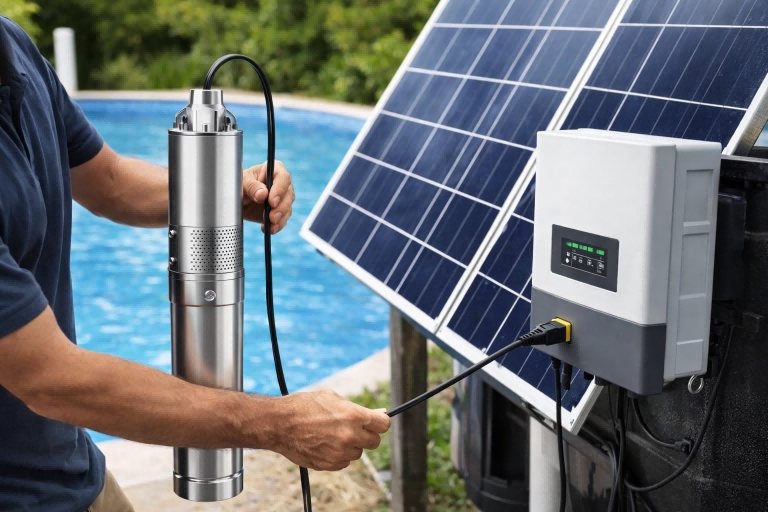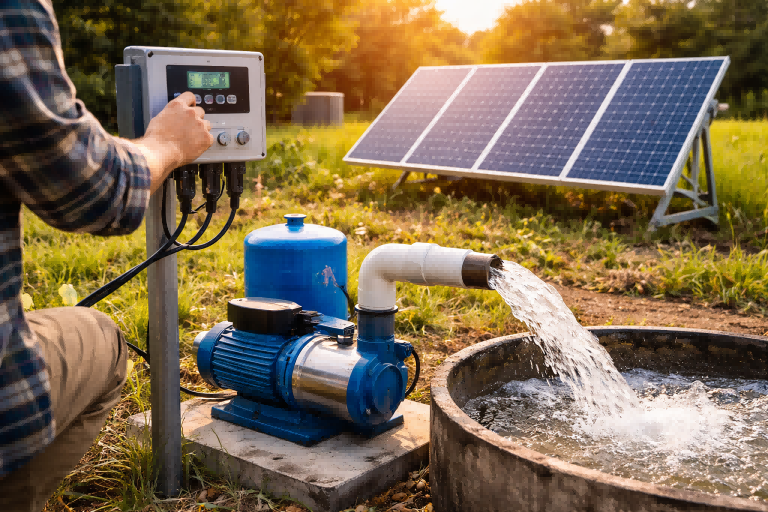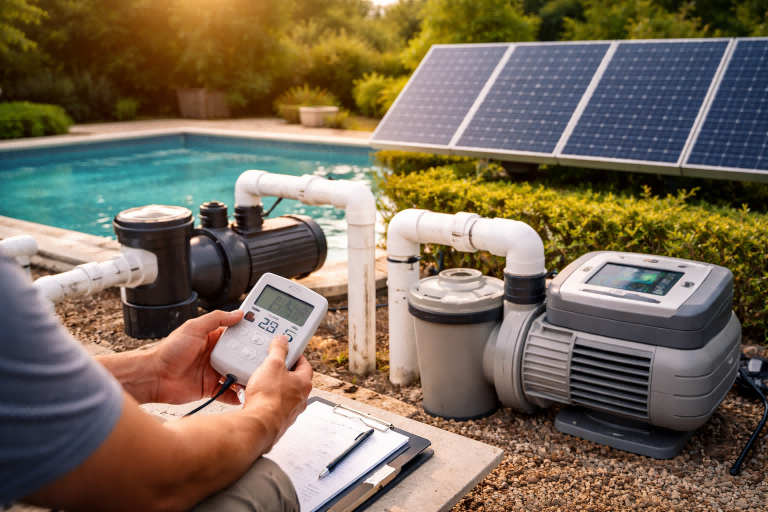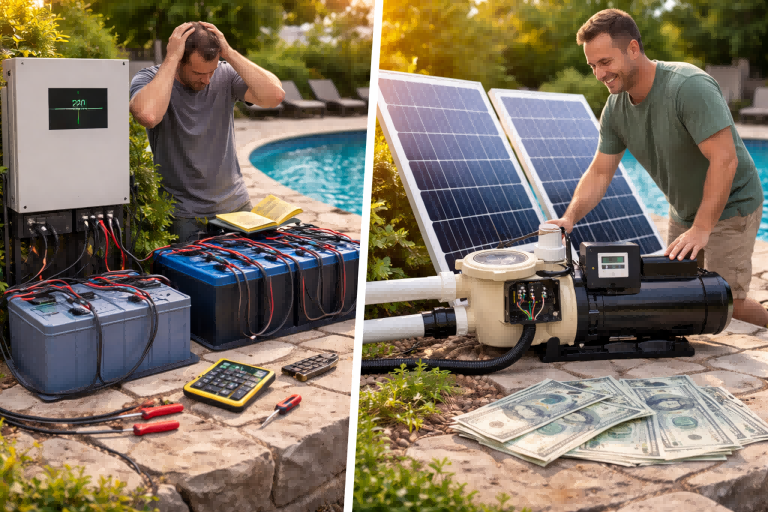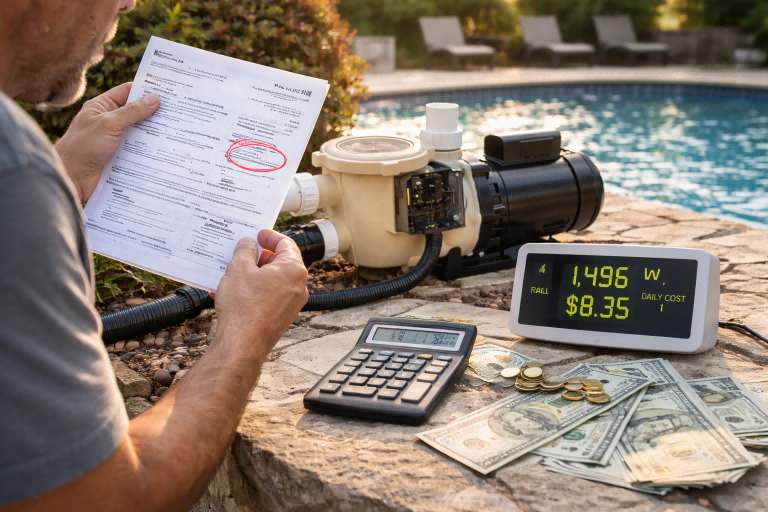Struggling with pump terminology can make sourcing parts a nightmare.
You know the outer shell is critical, but what is it actually called?
Let's demystify this essential component.
A water pump's main outer body is most commonly called the casing or the volute. This crucial component houses the impeller and other internal parts, protects them from the elements, and is specifically designed to direct the flow and build the pressure of the fluid being pumped.
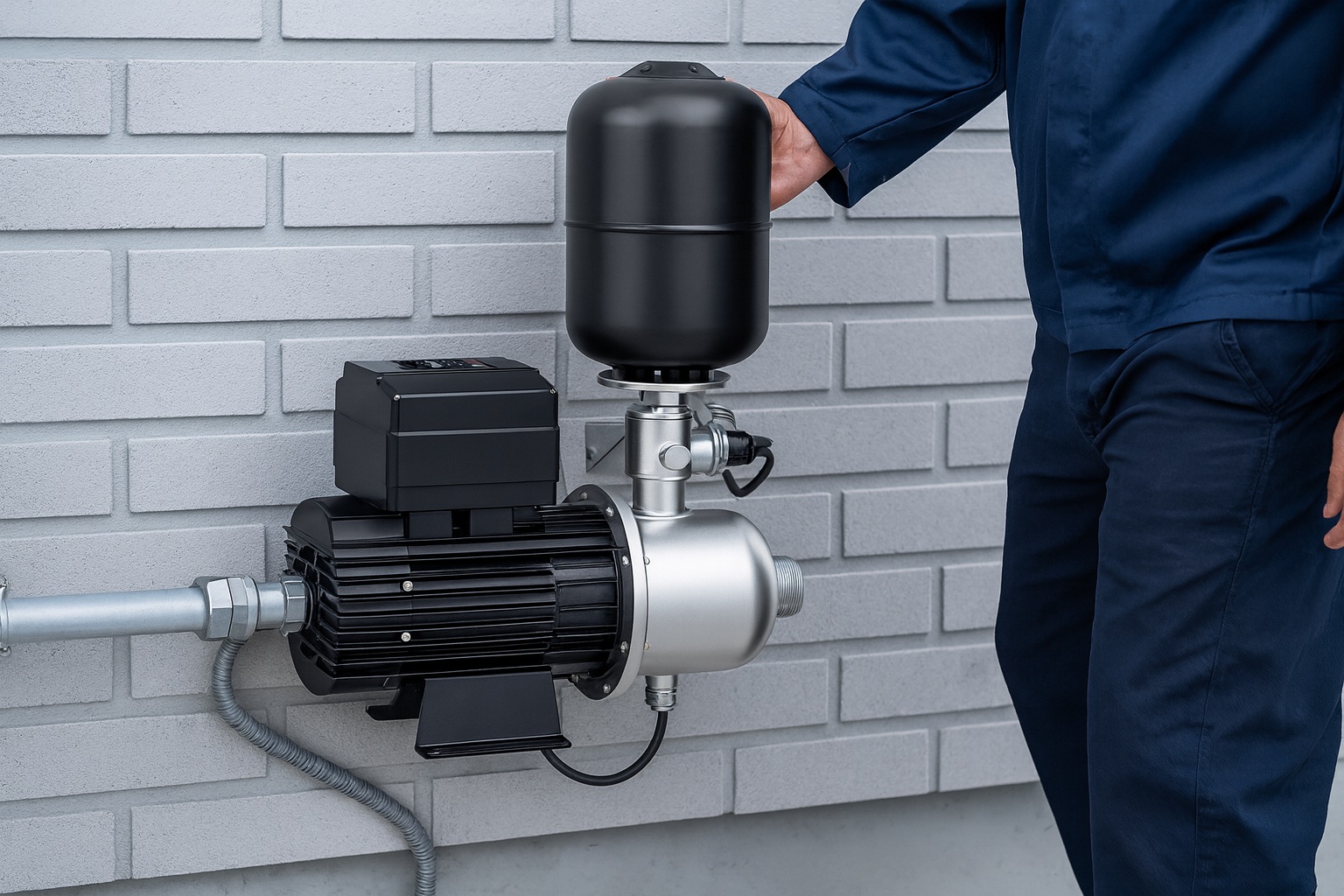
Knowing the correct term for a pump housing is just the first step.
To make smart purchasing decisions that impact your business's bottom line and reputation, you need to understand why it's designed the way it is, what it's made of, and what can go wrong.
This knowledge is the difference between a simple replacement and a significant upgrade.
Ready to move beyond basic terms and become an expert on this fundamental pump part?
Let's dive deeper into the components that drive your business.
The Volute Casing: More Than Just a Shell?
Are you confused by all the different terms for pump parts?
This confusion can lead to ordering errors and project delays.
Let's clarify the most important structural part of a centrifugal pump.
The shell of a centrifugal pump is called a volute or volute casing. It's a spiral-shaped housing that encloses the impeller. Its primary job is to slow down the water from the impeller, converting its speed (kinetic energy) into pressure (potential energy).
The term "volute" comes from its spiral, snail-shell-like shape.
This shape is not just for looks; it’s a feat of hydraulic engineering.
As water is flung outwards by the spinning impeller, it enters the volute.
The volute has a gradually increasing cross-sectional area as it circles around toward the discharge outlet.
This gradual expansion forces the water to slow down.
According to Bernoulli's principle, as the fluid's velocity decreases, its pressure must increase.
This is the core mechanism by which a centrifugal pump generates pressure.
Effectively, the volute casing is where the magic of pressure-building happens.
Understanding this design helps you appreciate why a well-made casing is essential for pump performance.
Single Volute vs. Double Volute Design
When evaluating pumps, you might encounter the terms "single volute" and "double volute".
The choice between them directly impacts the pump's lifespan and reliability, especially in larger or high-pressure applications.
A single volute design has one spiral channel collecting fluid and directing it to the discharge.
This design is simple and effective, especially when the pump is operating at or near its Best Efficiency Point (BEP).
However, when the pump operates away from its BEP, the pressure around the impeller becomes uneven.
This imbalance creates a strong sideways force on the impeller and shaft, known as radial thrust.
Over time, this radial thrust can cause increased shaft deflection, premature wear on bearings and seals, and even shaft failure.
A double volute casing solves this problem.
It features two cutwaters and two separate spiral channels set 180 degrees apart.
These two channels merge into a common discharge nozzle.
This design effectively splits the flow, creating opposing forces that largely cancel each other out.
The result is a significant reduction in radial thrust across a wider range of the pump's operating curve.
| Feature | Single Volute | Double Volute |
|---|---|---|
| Design | One spiral channel. | Two opposing spiral channels. |
| Radial Thrust | High, especially when away from BEP. | Significantly lower and balanced. |
| Best For | Small pumps, or pumps operating consistently at BEP. | Larger pumps, high-pressure systems, variable flow needs. |
| Lifespan | Can have shorter bearing and seal life. | Promotes longer bearing and seal life. |
| Cost | Generally less expensive to manufacture. | More complex and costly to cast. |
For a buyer like Andrew, who values quality and long-term reliability, a double volute design is a key feature to look for in larger or more critical pump applications.
It represents a better total cost of ownership by reducing maintenance and extending the pump's operational life.
The Role of the Cutwater
Inside the volute, there is a critical point called the "cutwater" or "volute tongue".
This is the part of the casing that is closest to the outer diameter of the impeller.
It's designed to "cut" the water as it leaves the impeller and direct it into the discharge pipe.
The gap between the impeller's outer edge and the cutwater is a crucial design parameter.
A smaller gap can increase efficiency slightly but may also increase noise, vibration, and pressure pulsations.
A larger gap reduces efficiency but results in a quieter, smoother-running pump.
Manufacturers like RAFSUN carefully engineer this gap to strike the optimal balance between peak performance and long-term operational stability.
Materials Matter: What Are Pump Casings Made Of?
Choosing a pump with the wrong casing material can lead to rapid corrosion and costly failures.
This can damage your reputation and increase warranty claims.
Understanding your material options protects your investment.
Pump casings are made from diverse materials like cast iron, stainless steel, bronze, and various plastics. The best choice depends on the fluid's properties (e.g., water, chemicals), temperature, pressure, and budget. Cast iron is common, while stainless steel offers superior durability.
The casing material is one of the most important specifications when sourcing a pump.
It must be strong enough to contain the pressure generated by the pump and chemically compatible with the liquid it will handle.
Selecting the wrong material is a common cause of premature pump failure.
For a distributor, offering pumps with appropriate material options for different applications is key to meeting customer needs and building trust.
Let's break down the most common materials and their best-use cases.
Cast Iron: The Industry Workhorse
Cast iron is the most widely used material for water pump casings.
Its popularity stems from a strong combination of good tensile strength, excellent vibration-damping qualities, and a relatively low manufacturing cost.
It is easy to cast into the complex shapes required for a volute.
For general-purpose applications like cold, clean water circulation in booster systems or HVAC, cast iron is an excellent and cost-effective choice.
It provides the necessary durability for decades of service in non-corrosive environments.
However, its main weakness is its susceptibility to rust and corrosion, especially with aggressive, salty, or very pure (deionized) water.
Over time, rust can flake off and damage seals or clog systems.
A layer of "passivation" rust can form on the inside, which sometimes protects it from further corrosion, but this is not guaranteed.
For basic residential and commercial water boosting, a high-quality cast iron casing is often the standard.
Stainless Steel: for Purity and Longevity
When purity, corrosion resistance, and durability are paramount, stainless steel is the preferred material.
Grades like 304 and 316 stainless steel are used extensively.
304 Stainless Steel is a great all-around choice for potable water, food processing, and applications where rust contamination is unacceptable. It offers excellent resistance to a wide variety of atmospheric and chemical corruptants.
316 Stainless Steel takes this a step further by adding molybdenum to its alloy. This addition significantly increases its resistance to chlorides, making it the ideal choice for coastal regions, brackish water, or mildly acidic fluids.
While more expensive to cast and machine than cast iron, stainless steel casings offer a vastly superior lifespan in challenging conditions.
Their smooth surface also can contribute to slightly better hydraulic efficiency.
For customers in markets like Australia with many coastal cities, or for those in the food and beverage industry, offering pumps with 316 stainless steel casings is a significant value proposition that aligns with a focus on quality.
Bronze and Other Alloys
Bronze is another classic pump material, known for its excellent corrosion resistance, especially in saltwater applications.
It's softer than iron and steel but is resistant to biofouling, which is why it has been a staple in marine pumps for centuries.
It is, however, a more expensive material.
Other specialized alloys, such as duplex stainless steels, are used for extremely demanding services like desalination plants or aggressive chemical processing, where a combination of high strength and extreme corrosion resistance is needed.
Engineered Plastics: The Modern Option
In recent years, advanced plastics and composites have become viable materials for pump casings.
Materials like Noryl (a blend of PPO and polystyrene), and glass-filled polypropylene offer surprising strength and outstanding chemical resistance at a lower cost and weight.
They are completely immune to rust and corrosion from many chemicals that would attack even stainless steel.
Their main limitations are typically lower pressure and temperature ratings compared to metals.
They are commonly found in smaller domestic booster pumps, pool pumps, and some chemical dosing pumps.
For low-power, constant-pressure systems like our new generation of silent self-priming pumps, engineered plastics can be a perfect fit, offering quiet operation and great value.
| Material | Key Advantage | Key Disadvantage | Typical Application |
|---|---|---|---|
| Cast Iron | Low Cost, Good Strength | Prone to Rust | General Clean Water Service, HVAC |
| Stainless Steel (304) | Excellent Corrosion Resistance | Higher Cost | Potable Water, Food Grade |
| Stainless Steel (316) | Superior Chloride Resistance | More Expensive | Coastal Areas, Brackish Water |
| Bronze | Excellent Saltwater Resistance | High Cost, Softer | Marine Applications |
| Engineered Plastics | Total Corrosion Immunity, Low Cost | Lower Pressure/Temp Limits | Small Domestic Pumps, Pools |
Why Does the Pump Housing Crack or Fail?
A cracked pump housing brings your entire water system to a halt.
Understanding why this happens is crucial to preventing costly downtime and repairs.
Let's explore the common culprits behind housing failure.
Pump housings typically fail from three main causes: freezing, water hammer (hydraulic shock), and severe corrosion. Freezing expands trapped water, cracking the casing. Water hammer creates intense pressure spikes that can fracture the metal. Corrosion simply eats away at the material until it fails.
A pump housing is built to be robust, but it's not indestructible.
Failure of this component is a serious issue, often requiring a complete pump replacement.
As a distributor, being able to advise customers on how to prevent these failures is a valuable service.
It demonstrates expertise and builds a long-term relationship based on trust, not just transactions.
Let's examine the primary reasons for casing failure in more detail.
The Destructive Power of Ice
This is the most common cause of cracked casings in cold climates.
Water has a unique property: it expands by about 9% when it freezes into ice.
If a pump is shut down in freezing temperatures and not properly drained, the water trapped inside the volute will turn to ice.
This expansion exerts an immense, irresistible force on the walls of the casing.
Cast iron, being strong but brittle, cannot stretch to accommodate this expansion.
It will simply crack under the pressure.
Even a single freezing event can be enough to destroy a pump.
How to Prevent Freeze Damage:
- Drainage: Always ensure pumps that may be exposed to freezing weather are fully drained before being shut down for an extended period. Most casings include a drain plug for this purpose.
- Insulation: For pumps that must operate in the cold, properly insulating the pump and piping can prevent freezing. Heat tracing (electric heating cable) is another effective solution.
- Circulation: Keeping water moving, even at a low flow rate, can prevent it from freezing.
Water Hammer: The Silent Killer
Water hammer, or hydraulic shock, is a sudden and extreme pressure surge in a piping system.
It happens when the flow of water is stopped or changed abruptly.
A common cause is a fast-closing valve, like a solenoid valve or a ball valve being shut too quickly.
The momentum of the moving column of water crashes to a halt, sending a high-pressure shockwave back through the pipe.
This pressure spike can be many times the normal operating pressure of the system.
The pump casing is often the first major component to experience this shockwave.
A single severe water hammer event can be violent enough to fracture the cast iron casing.
Repeated, less severe events can cause metal fatigue, eventually leading to a crack.
How to Prevent Water Hammer:
- Slow-Closing Valves: Use valves that are designed to close slowly.
- Pressure Arrestors: Install water hammer arrestors in the piping. These are small devices with an air or gas bladder that absorb the pressure shock.
- VFD Pumps: A Variable Frequency Drive (VFD) pump, like our RAFSUN Intelligent series, helps prevent water hammer. By gently ramping the pump up and down, it avoids the sudden starts and stops that cause these shocks.
The Slow Creep of Corrosion
Unlike the sudden violence of freezing or water hammer, corrosion is a slow and silent killer.
It gradually weakens the casing material from the inside out.
General Corrosion occurs when cast iron is used with even slightly corrosive water. It thins the wall of the casing over many years until it can no longer contain the operating pressure.
Pitting Corrosion is a more localized and aggressive form, often seen with stainless steel when exposed to high chloride levels. It creates small pits that can perforate the casing wall relatively quickly.
Galvanic Corrosion can happen if a pump made of one metal (like cast iron) is connected directly to pipes of a different metal (like copper) in the presence of water. An electrochemical reaction occurs that sacrifices the less noble metal, in this case, the cast iron casing.
How to Prevent Corrosion Damage:
- Material Selection: This is the most important factor. Always match the casing material to the fluid being pumped. Use 316 stainless steel for salty water. Use engineered plastics for chemicals.
- Water Treatment: In closed-loop systems, using corrosion inhibitors in the water can greatly extend the life of all components.
- Dielectric Unions: To prevent galvanic corrosion, use dielectric unions when connecting pipes of dissimilar metals. These fittings isolate the metals from each other, breaking the electrical circuit.
Conclusion
The pump housing, or volute casing, is a masterfully engineered component, critical for both containing the pump's internals and creating pressure.
Understanding its design, materials, and failure modes is key to sourcing reliable, long-lasting pumps.
FAQs
1. What is the difference between a casing and a housing?
In the context of pumps, "casing" and "housing" are often used interchangeably to refer to the outer shell. "Casing" is more common in technical centrifugal pump terminology.
2. Is a volute the same as an impeller?
No. The impeller is the rotating part with vanes that flings the water outward. The volute is the stationary, spiral-shaped casing that surrounds the impeller.
3. Why is it called a volute?
It is named after its shape. A volute is a spiral or scroll-like form, which accurately describes the gradually expanding channel of the pump casing.
4. Can a cracked pump housing be repaired?
Repairing a cracked cast iron casing is very difficult and often not recommended. Welding cast iron is a specialized skill, and the repair may not withstand pump pressures. Replacement is usually safer.
5. What is the part of the pump that spins?
The spinning part inside the pump casing is called the impeller. It has vanes that impart velocity to the water, pushing it towards the volute.
6. What is the difference between a single-stage and a multi-stage pump?
A single-stage pump has one impeller and volute combination. A multi-stage pump, like our RAFSUN multi-stage models, has multiple impellers and diffusers in a series within one casing to achieve much higher pressures.
7. How does a VFD pump help protect the housing?
A VFD (Variable Frequency Drive) pump, like our intelligent booster pumps, ramps up and down smoothly. This soft-start and soft-stop function eliminates the sudden pressure shocks (water hammer) that can stress and crack the pump housing.
8. What does "pump head" mean?
Pump head is the height to which a pump can raise a column of water. It's a measure of the pressure the pump can produce, often expressed in meters or feet.


